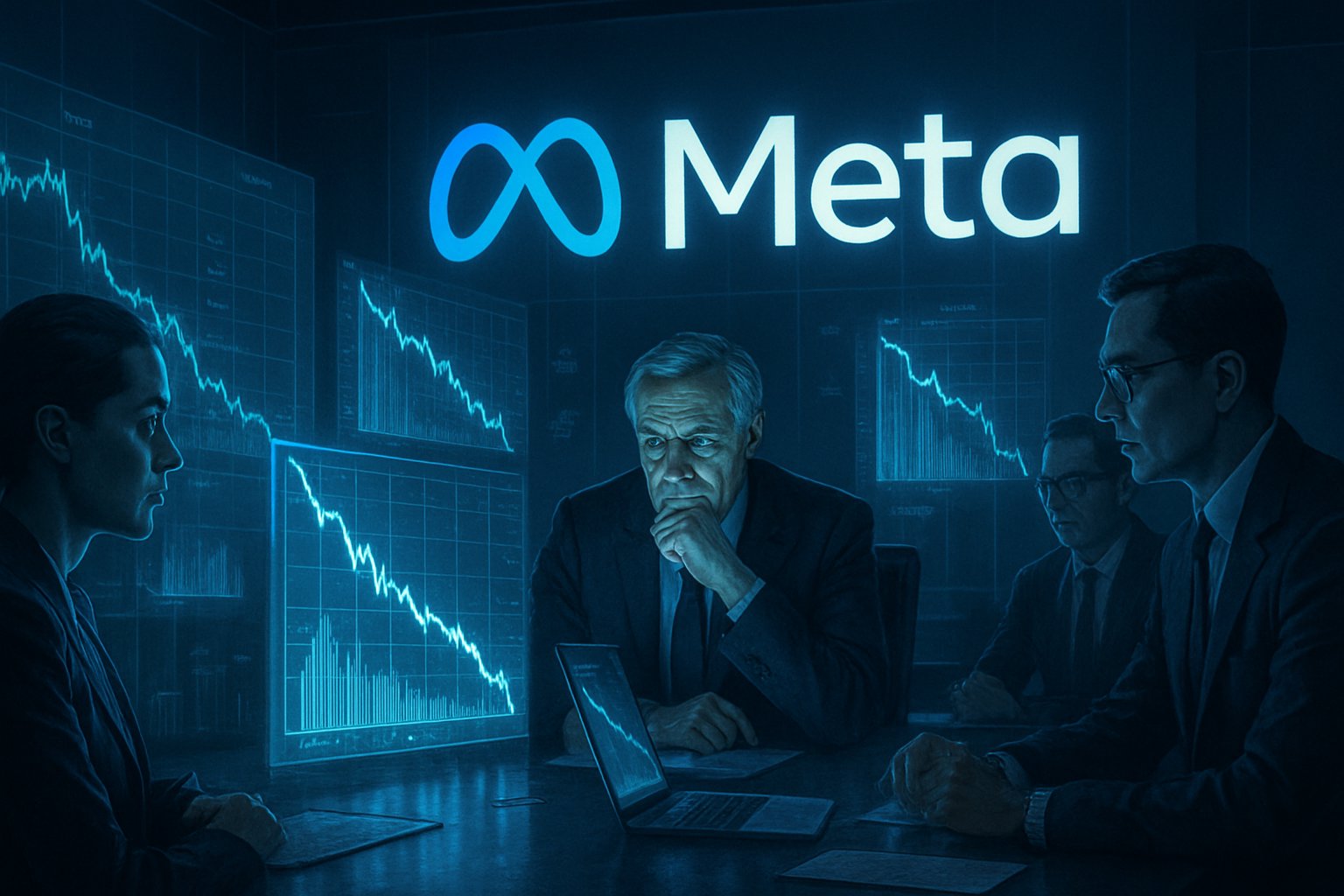
AI CERTS
4 hours ago
Meta faces social media giant pressure after 17% slide
Meanwhile, the market is weighing cash flow health against multi-year infrastructure commitments. Additionally, the sudden plunge evokes memories of Meta’s costly metaverse push. Investors remember prior Reality Labs losses that dragged profitability. Therefore, capital allocation questions dominate current debate on Wall Street. The following analysis explores the drivers, risks, and outlook shaping this volatile situation.
Slide Triggers Immediate Selloff
Earnings on Oct. 29 delivered strong topline growth yet sparked alarm. Meta posted $51.24 billion revenue, up 26% year over year. Nevertheless, guidance hinted at bigger 2026 capital outlays and rising payroll costs. The update intensified social media giant pressure in real time. Consequently, shares dropped roughly 11% in a single session.

Subsequently, the slide extended as analysts downgraded the stock. Oppenheimer cited an uncertain AI ROI timeline and trimmed its price target. Other firms echoed concerns about strained free cash flow. In contrast, management maintained that higher compute spending remains unavoidable. Mark Zuckerberg called the period potentially “the most exciting in our history.”
Recent trading reflects sensitivity to expense guidance and confidence swings. However, deeper structural questions loom, guiding the next debate stage.
CapEx Forecasts Spark Debate
Meta reiterated 2025 capital expenditures of $70-$72 billion and warned 2026 would be higher. Moreover, management signaled infrastructure costs would outpace revenue growth next year. Therefore, institutions immediately asked detailed capital allocation questions during the call. Susan Li stressed that GPU clusters, networking, and data centers remain priority assets.
- 17.9% one-month share slump
- Adjusted EPS of $7.25
- 2025 CapEx goal $70-$72 billion
- Social media giant pressure intensified after 11% single-day drop
However, skeptics highlighted financing risk given plans for a $25-$30 billion bond deal. Large debt increases leverage and could magnify earnings volatility if AI payoffs lag. Additionally, the proposal revived memories of earlier Reality Labs losses. Investors asked for a transparent AI ROI timeline but received broad directional commentary.
Capital intensity remains the core disagreement between bulls and bears. Consequently, social media giant pressure persists while the financing plan unfolds.
Funding Strategy Under Scrutiny
Reuters reported Meta preparing its largest bond sale to date. Meanwhile, bankers suggested multiple tranches across five, ten, and thirty-year maturities. In contrast, some credit analysts warned spreads could widen if macro conditions worsen. Nevertheless, Meta still boasts $44.45 billion in cash and strong free cash flow.
Consequently, rating agencies remain comfortable with the planned issuance size. However, material interest expense will reappear on income statements. That reality intensifies ongoing capital allocation questions among long-term holders. Furthermore, the extended AI ROI timeline challenges the patience of growth-oriented funds. Citigroup estimates Meta will spend over $150 billion on AI hardware through 2027.
Debt funding can cushion cash needs yet adds contractual obligations. Therefore, social media giant pressure will hinge on execution efficiency.
Comparing Peer Spending Paths
Alphabet, Microsoft, and Amazon all accelerated AI infrastructure budgets this year. However, cloud revenue provides those rivals with a direct monetization channel. Meta lacks that cushion, relying mainly on advertising to recover costs. Consequently, the market assigns a steeper discount to Meta’s investment cycle. Therefore, social media giant pressure looks harsher compared with cloud peers.
In contrast, Meta’s open-source approach with LLaMA supports ecosystem goodwill but limits licensing fees. Reality Labs losses also distort peer-to-peer comparisons by depressing consolidated margins. Additionally, Meta’s family of apps grows daily active people to 3.54 billion. Therefore, bulls foresee future conversion of that scale into AI-driven upsell products.
Peer benchmarks reveal social media giant pressure when advertising funds capital needs. Nevertheless, management insists differentiated models will unlock new income streams soon. Next, we examine Reality Labs history for cautionary clues.
Reality Labs History Lessons
Between 2021 and 2024, Reality Labs losses exceeded $50 billion. Consequently, many investors remain skeptical about ambitious side bets without clear timelines. Moreover, mixed adoption of VR headsets illustrates execution complexity. Investors today invoke Reality Labs losses during debates over superintelligence funding.
However, Meta claims lessons from that era inform stricter stage-gate reviews for AI projects. Additionally, leadership says open-source releases reduce platform risk versus closed products. Nevertheless, investor patience testing remains evident in every earnings call. Analysts ask repeatedly for metrics tying compute spend to engagement improvements.
Past overreach colors present forecasts and shapes discount rates. Consequently, social media giant pressure cannot dissipate without credible milestones.
Watchpoints For 2026 Guidance
The next catalyst arrives when Meta issues detailed 2026 CapEx numbers. Furthermore, markets await final terms of the multi-tranche bond offering. Subsequently, quarterly free cash flow updates will indicate breathing room for buybacks. Meanwhile, investor patience testing could intensify if margin guidance tightens.
Analysts also monitor any early paid AI products within the family of apps. Moreover, regulators in Europe may impose additional constraints on data usage. Therefore, scenario planning incorporates legal costs alongside development budgets. Professionals can enhance their expertise with the Chief AI Officer™ certification. Such training helps decode metrics and evaluate long-range AI ROI timeline projections.
Investor Patience Testing Phase
Fund managers tell us they are extending model horizons but still demanding evidence. Consequently, investor patience testing surfaces during even minor product delays. In contrast, some venture style holders welcome longer gestation if upside scales. Therefore, Meta must balance transparency with competitive secrecy.
Upcoming disclosures will either validate or challenge current valuation models. Nevertheless, social media giant pressure will likely persist until concrete wins emerge.
Conclusion And Next Steps
Meta’s month-long slide captures the tension between ambition and accountability. Large CapEx, uncertain paybacks, and looming bond obligations dominate headlines. However, the company still commands unmatched scale and world-class engineering talent. Consequently, future disclosures on margins, milestones, and monetization will set the tone. Until then, social media giant pressure will persist, keeping valuation swings volatile. Professionals should track guidance closely and upskill through advanced credentials to stay competitive. Explore the Chief AI Officer™ certification to deepen strategic insight and influence capital decisions. Moreover, rigorous analysis will separate hype from durable enterprise value over time.



